Wei Yan Peh
Multi-center Assessment of CNN-Transformer with Belief Matching Loss for Patient-independent Seizure Detection in Scalp and Intracranial EEG
Aug 09, 2022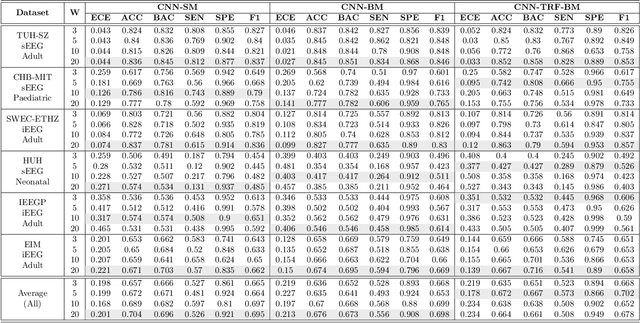
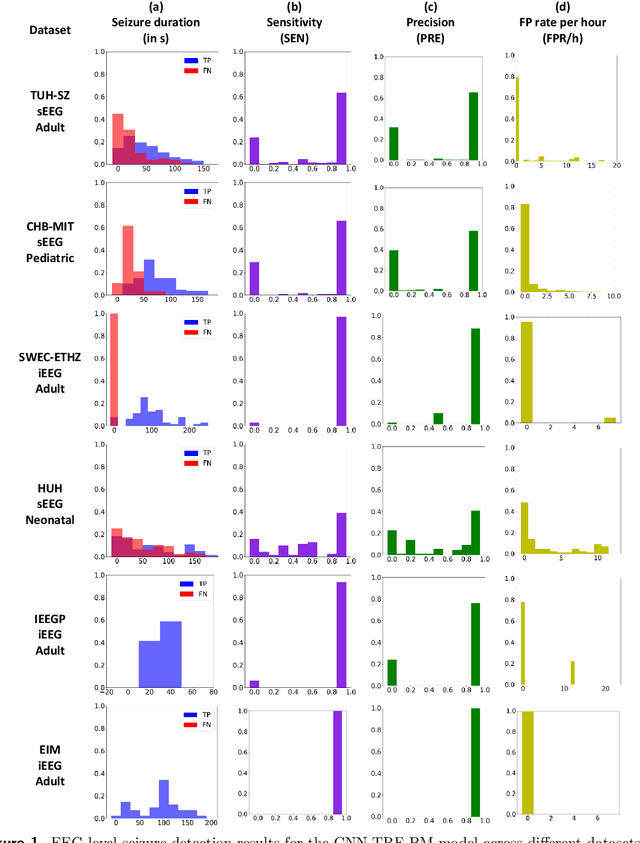
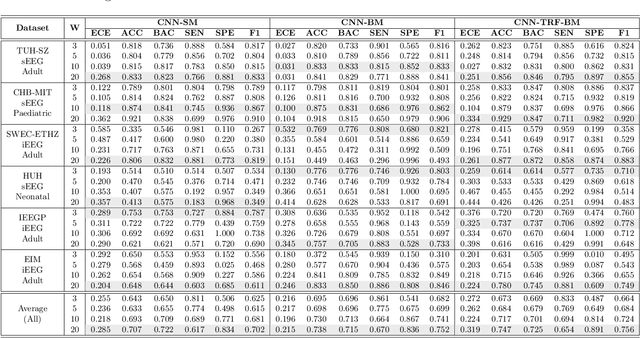
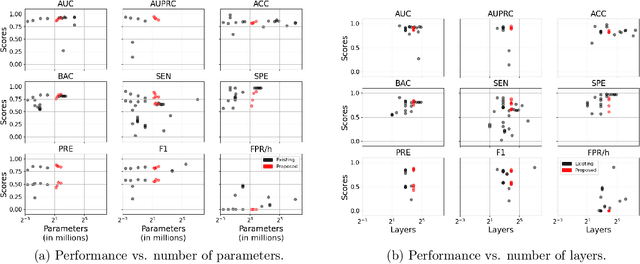
Abstract:Neurologists typically identify epileptic seizures from electroencephalograms (EEGs) by visual inspection. This process is often time-consuming. To expedite the process, a reliable, automated, and patient-independent seizure detector is essential. However, developing such detector is challenging as seizures exhibit diverse morphologies across patients. In this study, we propose a patient-independent seizure detector to automatically detect seizures in both scalp EEG (sEEG) and intracranial EEG (iEEG). First, we deploy a convolutional neural network (CNN) with transformers and belief matching loss to detect seizures in single-channel EEG segments. Next, we utilized the channel-level outputs to detect seizures in multi-channel EEG segments. At last, we apply postprocessing filters to the segment-level outputs to determine the start and end points of seizures in multi-channel EEGs. We introduce the minimum overlap evaluation scoring (MOES) as an evaluation metric, improving upon existing metrics. We trained the seizure detector on the Temple University Hospital Seizure (TUH-SZ) sEEG dataset and evaluated it on five other independent sEEG and iEEG datasets. On the TUH-SZ dataset, the proposed patient-independent seizure detector achieves a sensitivity (SEN), precision (PRE), average and median false positive rate per hour (aFPR/h and mFPR/h), and median offset of 0.772, 0.429, 4.425, 0, and -2.125s, respectively. Across four adult datasets, we obtained SEN of 0.617-1.00, PRE of 0.534-1.00, aFPR/h of 0.425-2.002, and mFPR/h of 0-1.003. Meanwhile, on neonatal and paediatric datasets, we obtained SEN of 0.227-0.678, PRE of 0.377-0.818, aFPR/h of 0.253-0.421, and mFPR/h of 0.118-0.223. The proposed seizure detector takes less than 15s for a 30 minutes EEG, hence, it could potentially aid the clinicians in identifying seizures expeditiously, allocating more time for devising proper treatment.
Transformer Convolutional Neural Networks for Automated Artifact Detection in Scalp EEG
Aug 04, 2022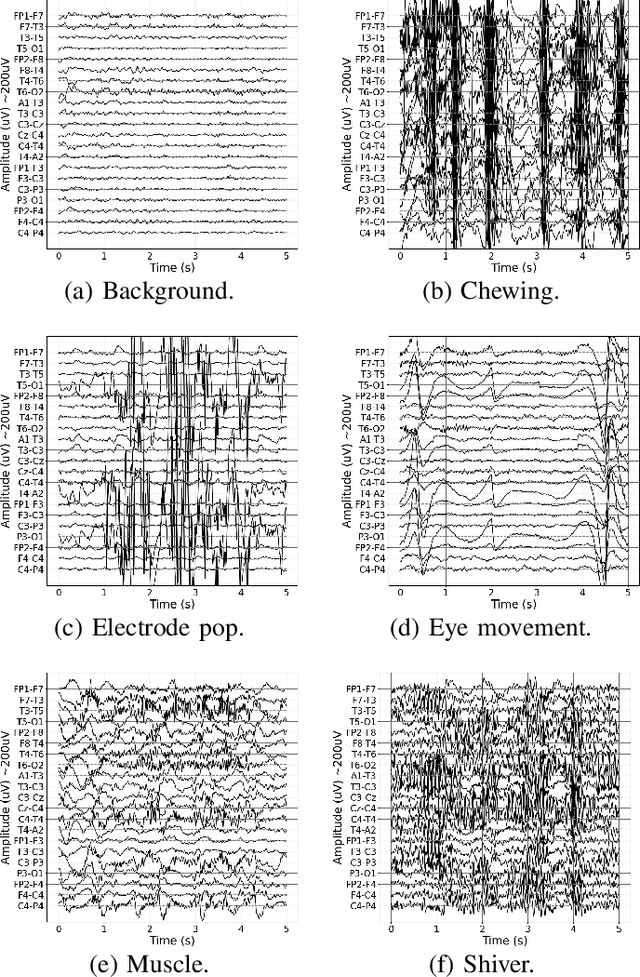
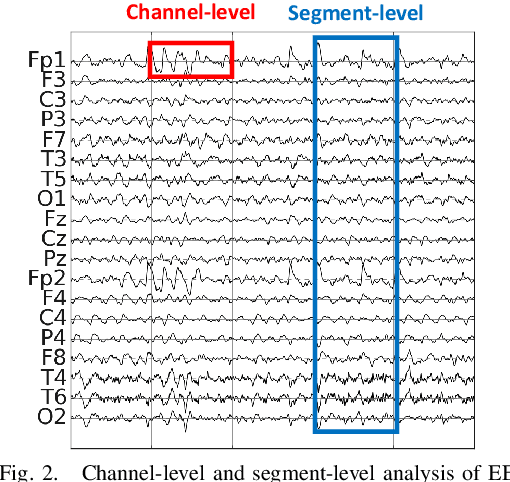
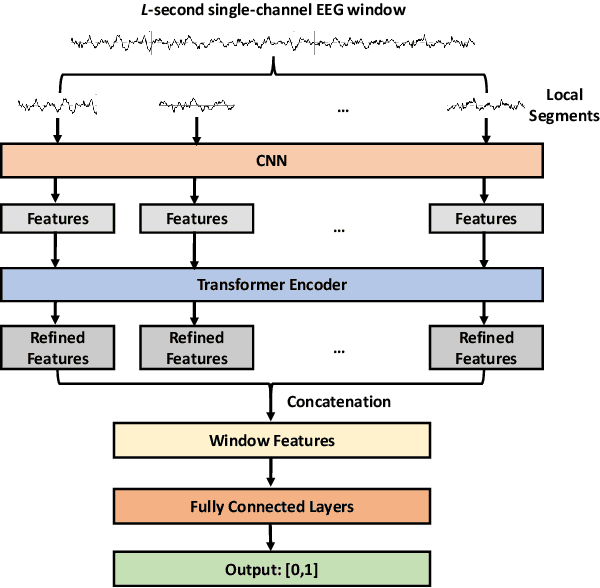
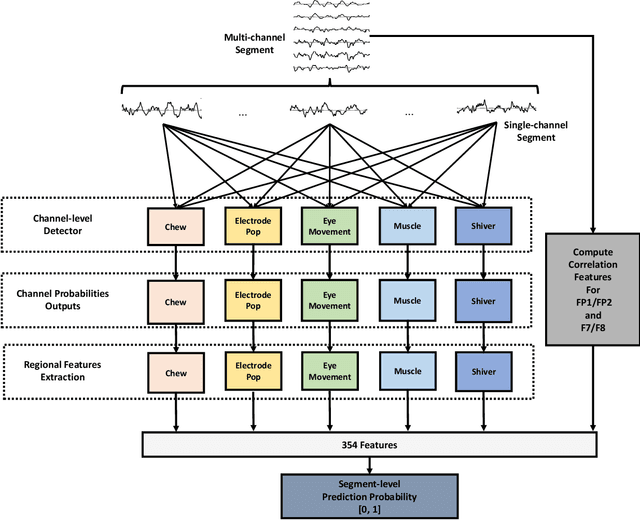
Abstract:It is well known that electroencephalograms (EEGs) often contain artifacts due to muscle activity, eye blinks, and various other causes. Detecting such artifacts is an essential first step toward a correct interpretation of EEGs. Although much effort has been devoted to semi-automated and automated artifact detection in EEG, the problem of artifact detection remains challenging. In this paper, we propose a convolutional neural network (CNN) enhanced by transformers using belief matching (BM) loss for automated detection of five types of artifacts: chewing, electrode pop, eye movement, muscle, and shiver. Specifically, we apply these five detectors at individual EEG channels to distinguish artifacts from background EEG. Next, for each of these five types of artifacts, we combine the output of these channel-wise detectors to detect artifacts in multi-channel EEG segments. These segment-level classifiers can detect specific artifacts with a balanced accuracy (BAC) of 0.947, 0.735, 0.826, 0.857, and 0.655 for chewing, electrode pop, eye movement, muscle, and shiver artifacts, respectively. Finally, we combine the outputs of the five segment-level detectors to perform a combined binary classification (any artifact vs. background). The resulting detector achieves a sensitivity (SEN) of 60.4%, 51.8%, and 35.5%, at a specificity (SPE) of 95%, 97%, and 99%, respectively. This artifact detection module can reject artifact segments while only removing a small fraction of the background EEG, leading to a cleaner EEG for further analysis.
 Add to Chrome
Add to Chrome Add to Firefox
Add to Firefox Add to Edge
Add to Edge